Can Cory Catfish Eat Betta Food? (Yes, Aquarists Opinion)
Native to Southeast Asia (Myanmar, Malaysia, Indonesia, Thailand, and Vietnam), Siamese fighting fish are known in America as Betta fish. Betta fish feed on protein-rich foods (live, frozen, freeze-dried, pellets, and flakes).
Cory/Corydoras catfish are aquarium fish in the family Calyctidae and the family Corydoradiinae. Corydoras catfish are sweet-natured freshwater fish, which is why they are so popular with aquarists.
Although betta and cory catfish are fish from different regions, “can cory catfish eat betta food?” To research the answer, I fed betta and cory catfish together for 4 days and found the answer.
Yes, cory catfish can eat betta food. I found that my cory catfish ate just as much as the bettas and seemed to really enjoy the pellets. The freeze-dried bloodworms were a hit with both species as well. Cory catfish are omnivorous, so they will eat just about anything you give them.
If you are looking for food that both bettas and cory catfish will love, I recommend pellets or flakes. Both species seem to enjoy these foods equally. I also recommend offering a variety of foods to your fish to ensure they are getting all the nutrients they need.
In this article, I’ll explain everything you need to know about feeding cory catfish and bettas together. I’ll also give you some tips on how to create a healthy diet for both fish species. Keep reading to learn everything you need to know about feeding cory and bettas together!
Betta fish food Nutrition Information for cory catfish
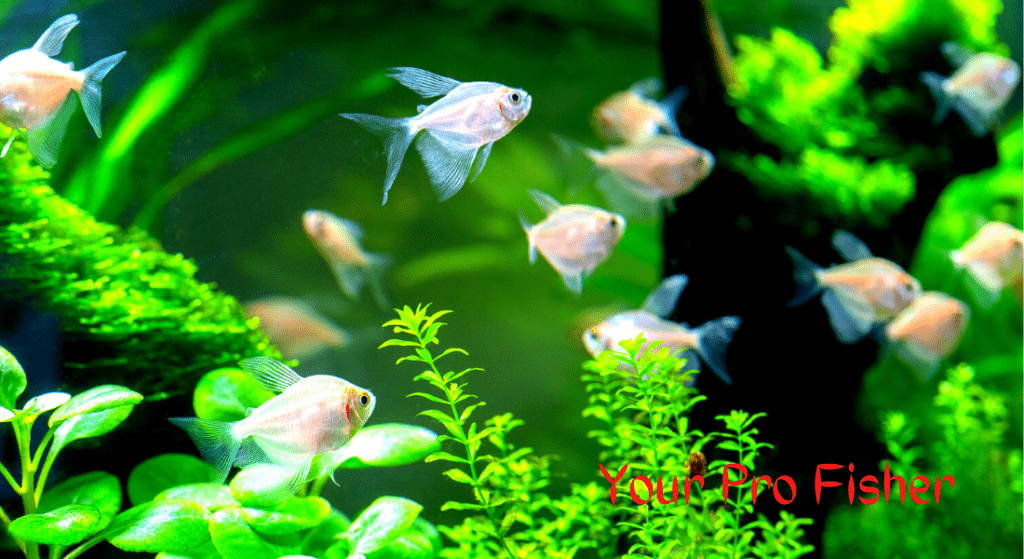
There is not a lot of specific research on the nutritional needs of cory catfish or betta fish. However, we can look at the general dietary needs of these fish and make some educated guesses about what they need to stay healthy.
Betta fish food Nutrition
- Protein ……. 47.0%
- Fat Content …… 6.0%
- Crude Fiber …….. 2.5%
- Moisture …….. 10.0%
- Ash …….. 8.5%
- Total Phosphorus …… 0.4%
Cory Catfish Food Nutrition
- Protein …….. 50.0%
- Fat Content ……. 7.0%
- Crude Fiber ….. 1.5%
- Moisture ….. 10.0%
- Ash …….. 8.5%
- Total Phosphorus …… 0.4%
As you can see, both foods are very similar in terms of their nutrient content. Both foods are high in protein and low in fat.
The main difference between the two foods is that cory catfish food has a higher crude fiber content than betta fish food. Crude fiber is the indigestible part of plant material.
Some fish need a higher fiber diet than others. Cory catfish are one of the species that benefit from a high-fiber diet.
A high-fiber diet can help cory catfish stay healthy and prevent constipation. If you are looking for a food that both bettas and cory catfish will love, I recommend pellets or flakes.
Both species seem to enjoy these foods equally. I also recommend offering a variety of foods to your fish to ensure they are getting all the nutrients they need.
What Do Cory Catfish Eat?
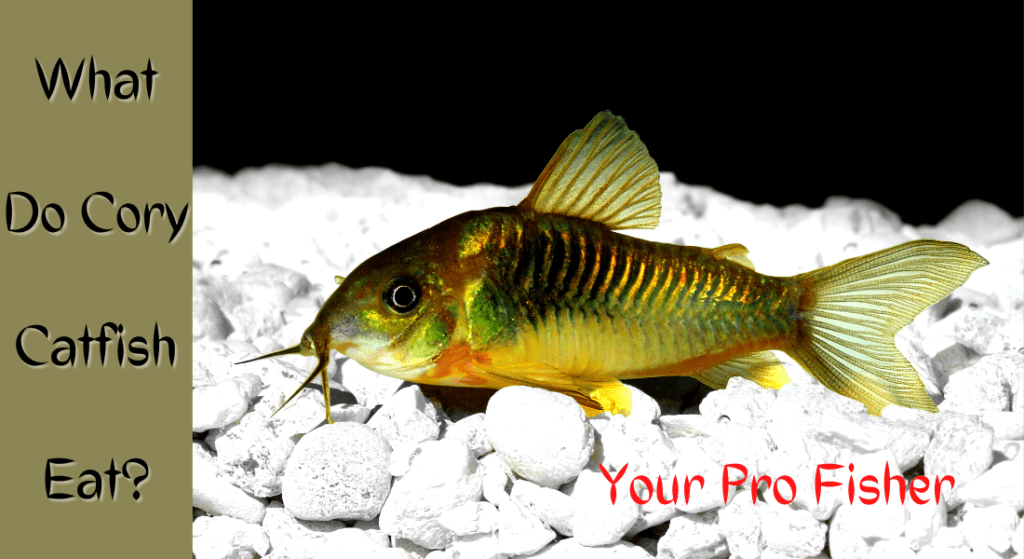
Cory catfish are omnivorous, which means they will eat just about anything you give them. In the wild, cory catfish eat a variety of foods, including small insects, worms, algae, and plant matter.
In the aquarium, you can feed your cory catfish a variety of foods, including pellets, flakes, live foods, and frozen foods. I recommend offering a variety of foods to your cory catfish to ensure they are getting all the nutrients they need.
Corys are bottom-dwellers, so they prefer to eat food that sinks to the bottom of the tank. I like to use pellets or flakes that sink to the bottom of the tank, so my cory catfish can easily find and eat them.
You can also offer live foods, such as brine shrimp or bloodworms, to your cory catfish. Live foods are a great way to add variety to your cory’s diet and they are a great source of protein.
Frozen foods, such as frozen bloodworms or daphnia, are also a great option for cory catfish. Frozen foods are a great way to add variety to your cory’s diet and they are usually less expensive than live foods.
Corydoras catfish are most commonly found in South America. There are 161 species of cory catfish in South America alone. Corridors catfish live in water thick with algae. Of the 161 species, 10 species of Corydoras catfish feed well with betta fish:
1. Bandit cory fish
Bandit cory fish are a type of bottom-feeding fish that primarily eat small invertebrates and detritus. In the wild, they will scavenge for food on the substrate of the stream or river bed. This diet is supplemented with algae and small insects.
In the aquarium, Bandit cory fish can be fed a variety of foods including pellets, flakes, and live or frozen foods. It is best to provide them with a variety of food sources to ensure they are getting all the nutrients they need.
2. Bronze cory fish
Bronze cory fish is one of the most popular types of cory fish and they are a great choice for both beginner and experienced aquarists alike. They are generally peaceful fish that get along well with most other fish, and they are a great choice for both community tanks and larger tanks.
Bronze Corys will eat just about anything you give them. In the wild, they eat small insects, worms, and plant matter. In the aquarium, you can feed your bronze corys a variety of foods including pellets, flakes, live foods, and frozen foods.
3. Julie cory fish
Julie cory fish are a type of bottom-dwelling fish that are native to South America. They are a peaceful fish that get along well with most other fish, and they are a great choice for both community tanks and larger tanks.
Julie cory catfish will eat just about anything you give them. In the wild, they eat small insects, worms, algae, and plant matter. In the aquarium, you can feed your Julie corys a variety of foods including pellets, flakes, live foods, and frozen foods.
4. Leopard cory fish
Leopard cory fish (Corydoras leopardus) are small, schooling freshwater fish that originate from South America. These fish are omnivorous and will eat most sinking pellets, flake food, and freeze-dried foods. They will also consume live and frozen foods such as bloodworms, brine shrimp, and daphnia.
Leopard cory fish are a peaceful species that does well in a community tank with other peaceful fish. They prefer to school in groups of six or more and do best in a tank that has plenty of hiding places. These fish are bottom-dwellers and spend most of their time close to the substrate.
Leopard cory fish are a hardy species that is relatively easy to care for. They are tolerant of a wide range of water conditions, and can even tolerate some changes in water parameters. These fish are not overly sensitive to water quality, but they do prefer clean water.
5. Panda cory fish
Panda cory fish (Corydoras panda) is a small, schooling freshwater fish that originate from South America. These fish are omnivorous and will eat most sinking pellets, flake food, and freeze-dried foods. They will also consume live and frozen foods such as bloodworms, brine shrimp, and daphnia.
Panda cory fish are a peaceful species that does well in a community tank with other peaceful fish. They prefer to school in groups of six or more and do best in a tank that has plenty of hiding places. These fish are bottom-dwellers and spend most of their time close to the substrate.
Panda cory fish are a hardy species that is relatively easy to care for. They are tolerant of a wide range of water conditions, and can even tolerate some changes in water parameters. These fish are not overly sensitive to water quality, but they do prefer clean water.
6. Pygmy cory fish
Pygmy cory fish (Corydoras pygmaeus) are small, schooling freshwater fish that originate from South America. These fish are omnivorous and will eat most sinking pellets, flake food, and freeze-dried foods. They will also consume live and frozen foods such as bloodworms, brine shrimp, and daphnia.
Pygmy cory fish are a peaceful species that does well in a community tank with other peaceful fish. They prefer to school in groups of six or more, and do best in a tank that has plenty of hiding places. These fish are bottom-dwellers and spend most of their time close to the substrate.
Pygmy cory fish are a hardy species that is relatively easy to care for. They are tolerant of a wide range of water conditions, and can even tolerate some changes in water parameters. These fish are not overly sensitive to water quality, but they do prefer clean water.
7. Skunk cory fish
Skunk cory fish (Corydoras arcuatus) are small, schooling freshwater fish that originate from South America. These fish are omnivorous and will eat most sinking pellets, flake food, and freeze-dried foods.
Skunk cory fish are a peaceful species that does well in a community tank with other peaceful fish. They prefer to school in groups of six or more and do best in a tank that has plenty of hiding places. These fish are bottom-dwellers and spend most of their time close to the substrate.
Skunk cory fish are a hardy species that is relatively easy to care for. They are tolerant of a wide range of water conditions, and can even tolerate some changes in water parameters. These fish are not overly sensitive to water quality, but they do prefer clean water.
8. Three-stripe cory fish
The Three-stripe cory fish is a type of cory catfish that is known for its distinctive stripes. It is a popular fish for aquariums and can be found in many pet stores. Cory catfish are omnivorous and will eat most types of food, including betta food.
They are a hardy species and can tolerate a wide range of water conditions. Three-stripe cory fish are peaceful fish that do well in community tanks. They prefer to live in groups and should be kept in aquariums with other fish that are similar in size and temperament.
9. Two-spot cory fish
The Two-spot cory fish is a type of cory catfish that is named for the two spots that are located behind its head. It is a popular fish for aquariums and can be found in many pet stores. Cory catfish are omnivorous and will eat most types of food, including betta food.
They are a hardy species and can tolerate a wide range of water conditions. Two-spot cory fish are peaceful fish that do well in community tanks. They prefer to live in groups and should be kept in aquariums with other fish that are similar in size and temperament.
10. Zebra corydoras catfish
The Zebra corydoras is a type of cory catfish that is named for its distinctive zebra-like stripes. It is a popular fish for aquariums and can be found in many pet stores. Cory catfish are omnivorous and will eat most types of food, including betta food.
They are a hardy species and can tolerate a wide range of water conditions. Zebra corydoras catfish are peaceful fish that do well in community tanks. They prefer to live in groups and should be kept in aquariums with other fish that are similar in size and temperament.
What Do Betta Fish Eat?
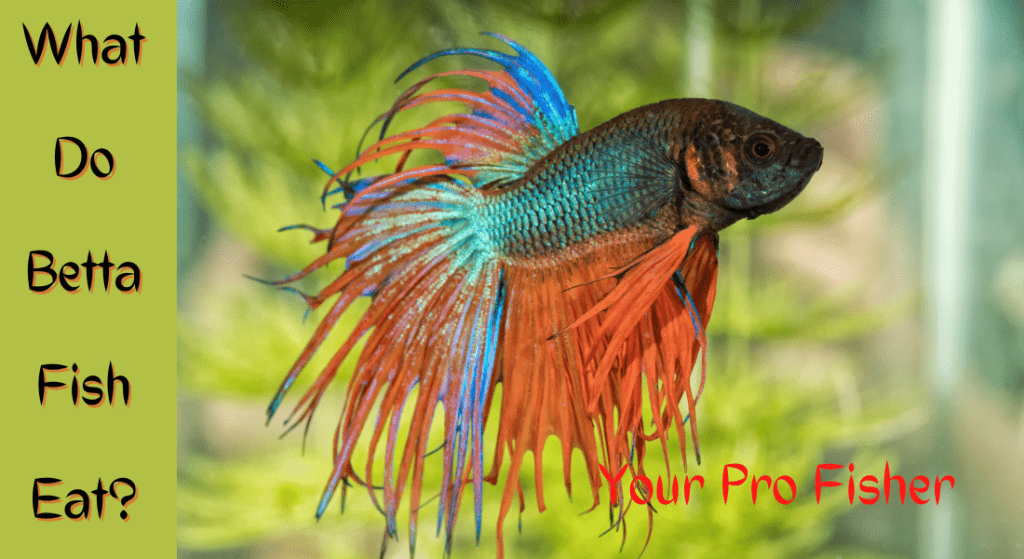
Bettas are native to Southeast Asia and are known as “Siamese fighting fish.” Bettas are a popular aquarium fish because of their bright colors and interesting behavior.
In the wild, bettas eat a variety of foods, including small insects, worms, and crustaceans. In the aquarium, you can feed your bettas a variety of foods, including pellets, flakes, live foods, and frozen foods.
I recommend offering a variety of foods to your bettas to ensure they are getting all the nutrients they need. Bettas are surface-dwellers, so they prefer to eat food that floating at the top of the tank.
You can use pellets or flakes that float at the top of the tank, so your bettas can easily find and eat them. You can also offer live foods, such as brine shrimp or bloodworms, to your bettas.
Live foods are a great way to add variety to your betta’s diet and they are a great source of protein. Frozen foods, such as frozen bloodworms or daphnia, are also a great option for bettas.
Frozen foods are a great way to add variety to your betta’s diet and they are usually less expensive than live foods.
Do cory catfish eat betta food?
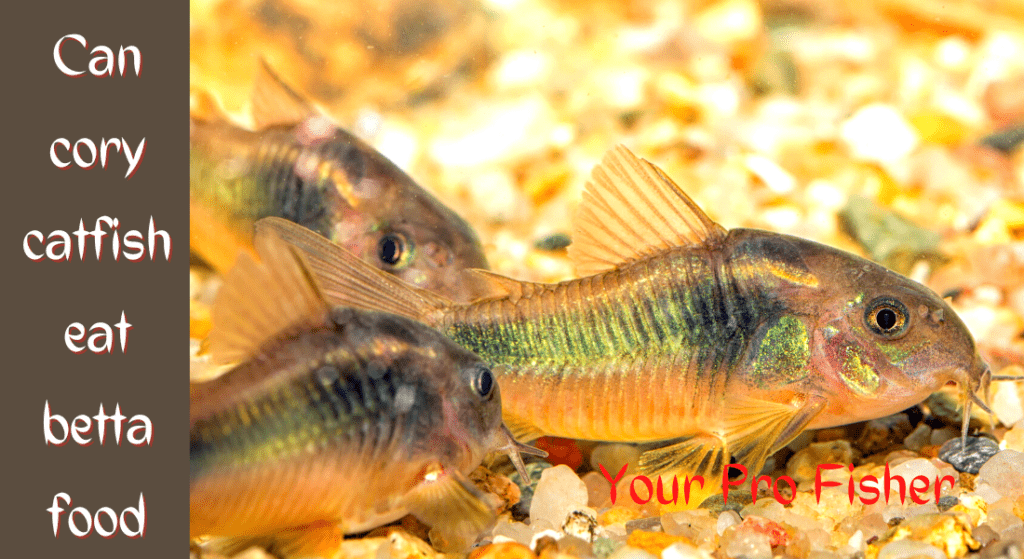
Yes, cory catfish can eat betta food. I found that my cory catfish ate just as much as the bettas and seemed to really enjoy the pellets. The freeze-dried bloodworms were a hit with both species as well.
Cory catfish are omnivorous, so they will eat just about anything you give them. If you are looking for a food that both bettas and cory catfish will love, I recommend pellets or flakes.
Both species seem to enjoy these foods equally. I also recommend offering a variety of foods to your fish to ensure they are getting all the nutrients they need.
I’ve explained everything you need to know about feeding cory catfish and bettas together. Keep these tips in mind when creating a diet for your cory catfish and bettas and you’ll be sure to have two happy and healthy fish!
Do Cory Catfish Eat Algae?
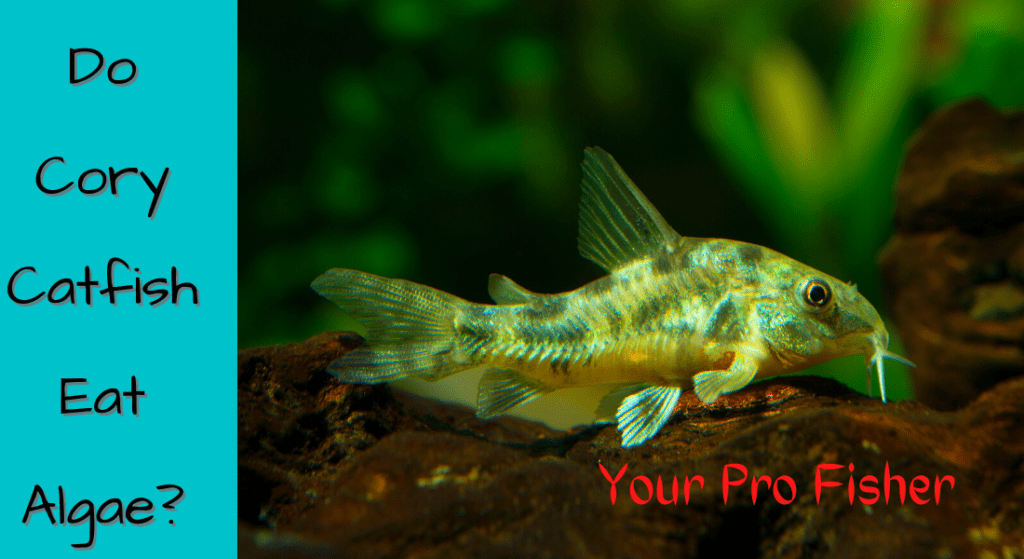
Cory catfish are known as “algae eaters” because they love to nibble on algae that grow in aquariums. Corys will also eat other types of food, including pellets, flakes, live foods, and frozen foods.
I recommend offering a variety of foods to your cory catfish to ensure they are getting all the nutrients they need. Corys are bottom-dwellers, so they prefer to eat food that is sinking to the bottom of the tank.
You can use pellets or flakes that sink to the bottom of the tank, so your cory catfish can easily find and eat them. You can also offer live foods, such as brine shrimp or bloodworms, to your cory catfish.
can cory catfish eat goldfish food?
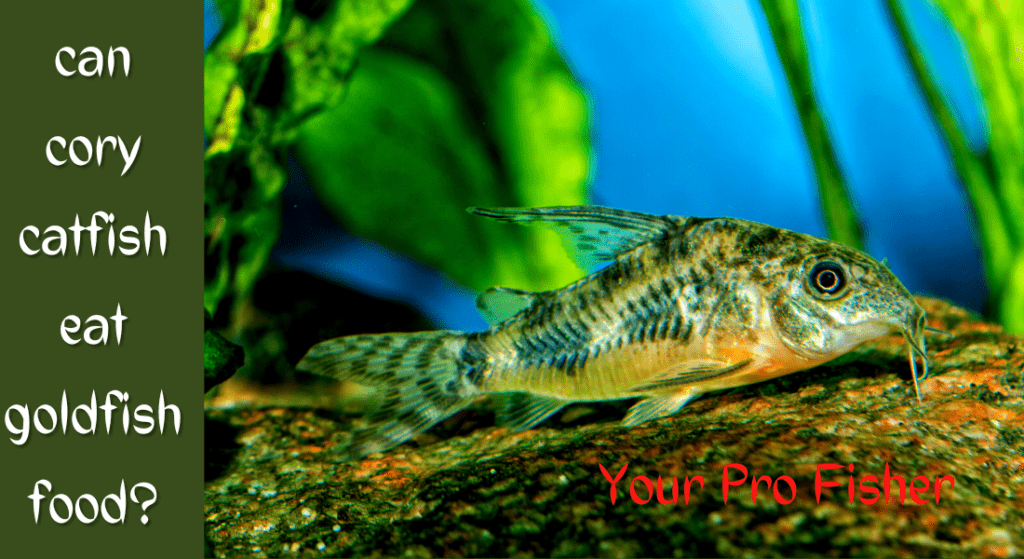
Cory catfish are omnivorous, so they will eat just about anything you give them. If you are looking for food that both cory catfish and goldfish will love, I recommend pellets or flakes.
Both species seem to enjoy these foods equally. I also recommend offering a variety of foods to your fish to ensure they are getting all the nutrients they need.
Keep these tips in mind when creating a diet for your cory catfish and goldfish and you’ll be sure to have two happy and healthy fish!
Is betta Fish Food safe for cory catfish?
There is no definitive answer to this question as each fish has different dietary needs. However, most aquarists agree that betta fish food can be safely fed to cory catfish.
Bettas are omnivorous fish and can thrive on a variety of food sources, including flakes, freeze-dried foods, and pellets. Cory catfish are also omnivorous, but they have a higher need for plant matter in their diet.
As long as the betta food you’re feeding contains some plant matter, it should be safe to feed your cory catfish. Of course, it’s always best to consult with a veterinarian or experienced aquarist before making any changes to your fish’s diet.
What are the benefits of betta fish food feeding Catfish?
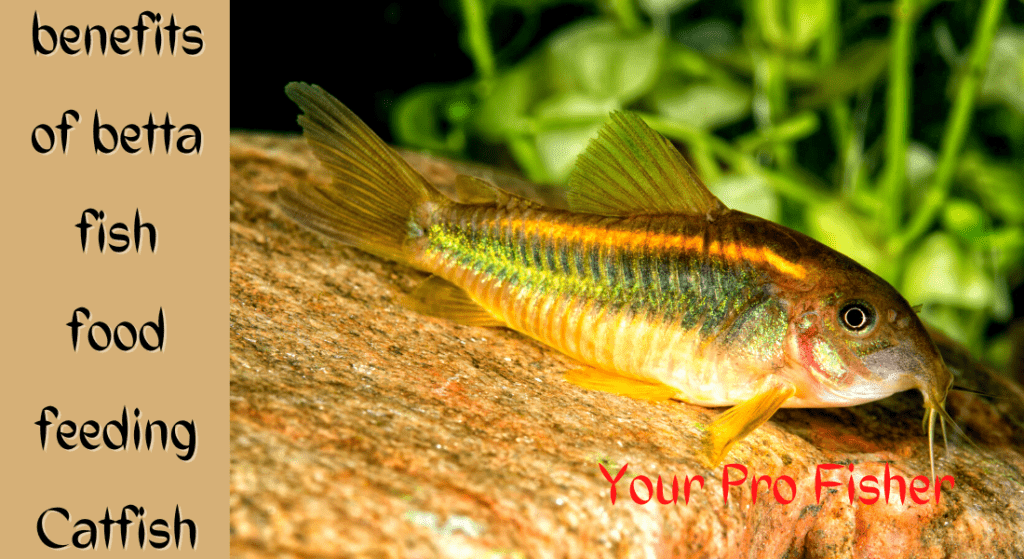
There are a few benefits to feeding betta fish food to your cory catfish.
1. Betta fish food is high in protein
As an experienced aquarist, I can say that betta fish food is high in protein. This is important because protein is essential for the growth and health of all fish.
Bettas need a diet that is high in protein to stay healthy and active. The protein in betta food helps them develop strong muscles, healthy skin, and brilliant colors.
2. Betta fish food often contains added vitamins and minerals
Betta fish food often contains added vitamins and minerals, which is beneficial for your cory catfish. Vitamins and minerals are essential for the health of all fish, and they help to keep your fish’s immune system strong.
3. Betta fish food is usually less expensive than catfish-specific food
Betta fish food is usually less expensive than catfish-specific food. This is because bettas are a more popular fish than cory catfish, so there is more demand for their food.
The increased demand for betta food drives the price down, making it more affordable for aquarists. If you’re on a budget, betta fish food is a great option for feeding your cory catfish.
What are the best foods to feed Catfish?
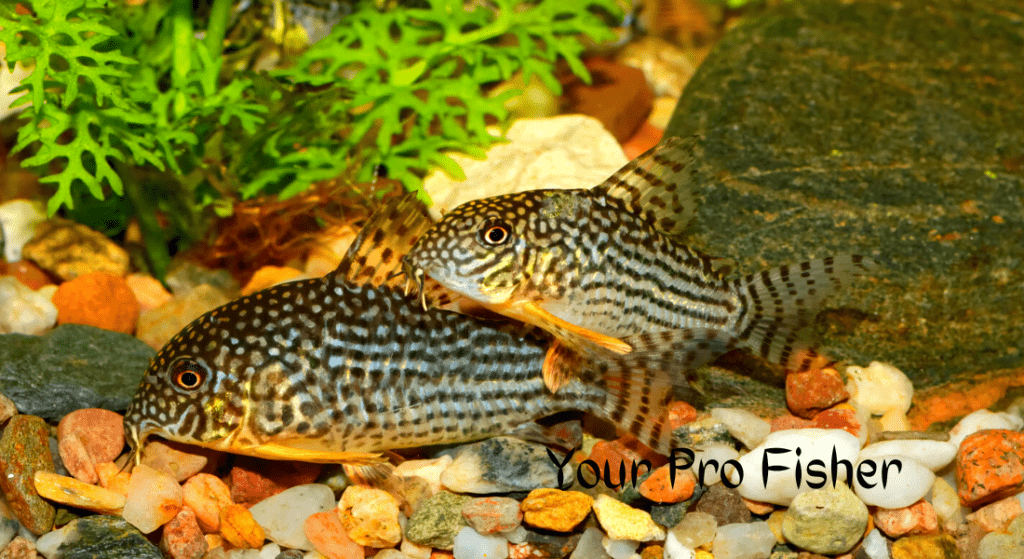
There are a few different types of food that are popular among aquarists who keep cory catfish. These include pellets, flakes, live foods, and frozen foods.
1. Pellets
Pellets are a type of fish food that is made from compressed fishmeal. They are a popular choice among aquarists because they sink to the bottom of the tank, making them easy for bottom-dwelling fish like cory catfish to find and eat.
Pellets are also a nutritious option for your fish, as they often contain added vitamins and minerals.
2. Flakes
Flakes are another type of fish food that is popular among aquarists. They are made from compressed fishmeal, but they are lighter and flakier than pellets.
Flakes float on the surface of the water, making them easy for all fish to find and eat.
3. Live foods
Live foods, such as brine shrimp and bloodworms, are a great option for cory catfish. These foods are high in protein and essential nutrients, and they are a great way to add variety to your fish’s diet.
4. Frozen foods
Frozen foods, such as frozen bloodworms and daphnia, are another great option for cory catfish. These foods are easy to store and are a great way to add variety to your fish’s diet.
Which is the best option for you will depend on your personal preferences and the needs of your fish. There is no wrong answer, so feel free to experiment until you find what works best for you and your fish.
Corydoras and Bettas as Tank Mates
While cory catfish and bettas can be safely kept together, there are a few things you should keep in mind if you decide to put them in the same tank.
1. Cory catfish are bottom-dwelling fish, while bettas are surface-dwelling fish.
This means that you will need to provide hiding places for your cory catfish, such as caves or plants. Otherwise, they may feel stressed and become sick.
2. Cory catfish are shy fish, while bettas are known for being aggressive.
Because of this, you will need to be careful when choosing tank mates for your cory catfish. Avoid tank mates that are known to be aggressive, such as other bettas, goldfish, and barbs.
3. Cory catfish are scavengers, while bettas are predators.
This means that you will need to be careful not to overfeed your fish. Overfeeding can lead to health problems for both cory catfish and bettas.
4. Cory catfish prefer a temperature of 74-79 degrees Fahrenheit, while bettas prefer a temperature of 76-82 degrees Fahrenheit.
This means that you will need to provide a heater for your tank if you live in an area with a cold climate. Otherwise, your fish may become sick.
5. Cory catfish are social fish, while bettas are not.
This means that you will need to provide a minimum of two cory catfish per tank. Otherwise, they may become stressed and become sick.
Overall, cory catfish and bettas can be safely kept together as long as you take a few precautions. If you provide a suitable environment for both fish, they will likely live happily together for many years.
How Often to Feed Cory Catfish and Betta Fish?
Cory Catfish and Betta Fish are both common fish that can be found in many home aquariums. While they may have different dietary needs, both fish can typically be fed the same types of food.
The recommended feeding schedule for Cory Catfish is twice a day, while the recommended feeding schedule for Betta Fish is once a day.
The Summary
Cory catfish are a type of bottom-dwelling fish that is popular among aquarists. They are a nutritious option for your fish, as they often contain added vitamins and minerals. Cory catfish are also shy fish, so you will need to be careful when choosing tank mates for your cory catfish.
Avoid tank mates that are known to be aggressive, such as other bettas, goldfish, and barbs. Cory catfish are also social fish, so you will need to provide a minimum of two cory catfish per tank. Otherwise, they may become stressed and become sick.
Aquarists Opinion is a website that provides information on all things fish-related. We are a team of passionate fish enthusiasts who love to share our knowledge with the world.
If you have any questions about can cory catfish eat betta food, feel free to ask us in the comments section below. We would be more than happy to help you out!
